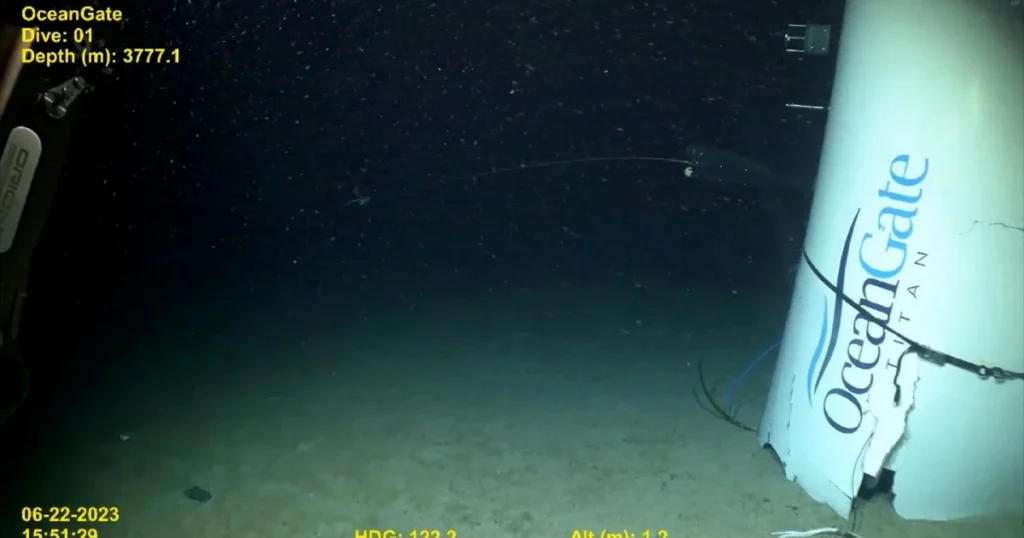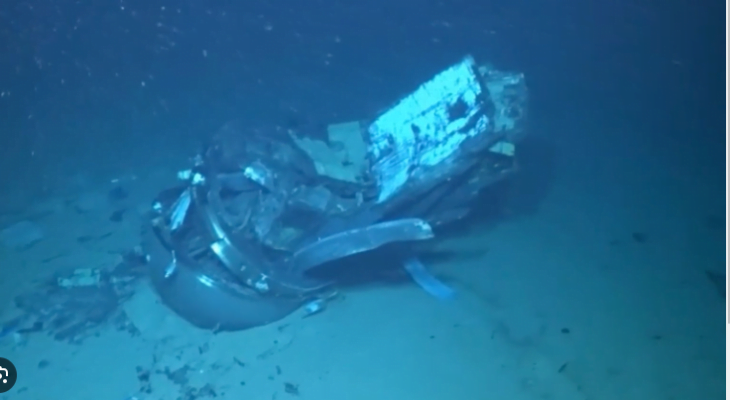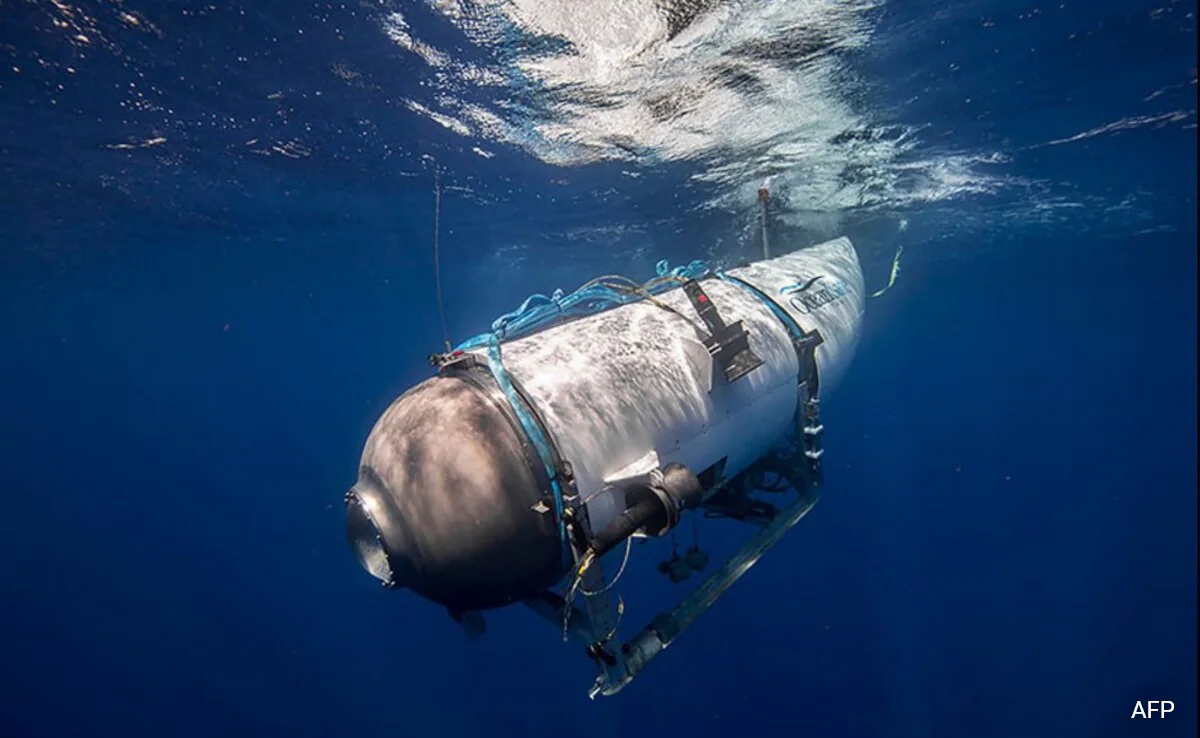| In Short |
| The Titan submersible faced technical issues and aborted a dive just days before the fatal implosion |
| Safety concerns about the sub’s design and materials were raised by former employees but were reportedly ignored |
| Hearings are examining OceanGate’s decision-making and lack of certification from maritime authorities |
| Experts are calling for stricter safety regulations for future deep-sea exploration missions. |
| OceanGate faces potential legal and financial repercussions following the Titan tragedy. |
The recent implosion of OceanGate’s Titan submersible has shed light on some shocking facts regarding the catastrophe and its lead-up. Testimonies, by what appears to have occurred on that fateful day, said investigations, clearly state technical problems did indeed plague the vessel several days before the implosion that took out the crew.
In it, the details of what happened are provided, and this was accompanied by warnings believed not to have been heeded; the incident may ultimately affect deep sea exploration deep.
Abortive Dive: Days Prior to the Disaster
The most shocking revelation from the hearings was when an ex-OceanGate employee revealed that the Titan sub had to abort a dive just days before the fateful sink. They were at the Titanic wreck site when they had to abort that mission. This again questions the safety protocols of OceanGate and the preparedness done by the company.

The testimony of the abandoned dive possibly indicated in advance that the stage for the disaster was already set, and the mission had to take on the tragic consequence.
Apparently, the submersible had several technical problems which left it not reliable for the completion of the dive. The next signs could not stop OceanGate from continuing with the planned expedition-a fatal end would be the result.
Safety Concerns Raised Before the Dive
According to reports, concerns over the safety of the Titan submersible were raised long before the ill-fated dive. Based on testimonies, former employees had reported several concerns with regards to the safety of the submersible to OceanGate, such as design flaws in the construction of the submersible and problems with the materials used

One of the most critical issues raised was the non-existence of certification from a known maritime authority; this is a case which OceanGate acknowledged but played down.
The submersible was constructed from carbon fiber and titanium, something the experts have dismissed as a combination for deep-sea exploration. The company had gotten several warnings on the risks of using such material and continued with its expeditions anyway, playing innovation above established safety protocols.
The Hearings: A Deep Dive into What Went Wrong and Who Let It Happen
The U.S. House Subcommittee on Maritime Safety held hearings to investigate the circumstances leading up to the implosion of Titan and examine what caused the tragedy. Some of the witnesses who testified during those hearings spoke about OceanGate’s decision-making procedure, technical failure in the submersible, and its general approach to deep-sea exploration.
The most critical testimony was given by the company’s former operations director, OceanGate who stated that their submersible had recurrent electrical malfunctions and communication fails during dives. Not only did these associated communication failures, but also lack of proper qualification raise serious questions about the commitment of OceanGate toward passenger safety.
Loopholes in regulation are also something the subcommittee is looking at to see how OceanGate managed to bypass strict safety measures normally applied to deep-sea voyages. What the future of exploration missions might hold and the regulation of private companies in underwater exploration remains widely open.
Experts Weigh In on the Implosion and the Future of Deep-Sea Exploration
The sinking of the Titan submersible has sparked a debate regarding the risks associated with deep-sea research. Experts also noted that though innovation remains one of the crucial factors in the development of underwater research, that should not be given preference over safety. The combination of carbon fiber and titanium used in submersible construction has been called into question so much that there are experts who have even called for drastic measures, insisting that any future vessels should be made stronger and capable of withstanding deep sea pressure.
Some assert that submersibles, particularly when they carry humans, need to acquire a certification that includes thorough review and testing of every device. While OceanGate was keen to push the boundaries in underwater tourism, the tragic end of the Titan mission with its melodramatic overtones is a harsh reminder that safety devices often get neglected in the pursuit of achievement.
Aftermath: OceanGate End
Given the revelations and what has come to light from the recent hearings about the technical issues with the submersible, OceanGate is in for a serious battering in terms of legal and financial implications. Families of the dead have already begun to pursue legal options, and there is massive pressure from regulatory authorities to tighten up the safety standards of private deep-sea expeditions.
What they discover may also impact the direction of private survey companies into the future, and how they will weigh research over risk. In this instance, there is much riding for OceanGate in terms of reputation and company sustainability within the business going forward.
The Greater Significance: What All This Means for Future Deep-Sea Research Explorations
The Titan submersible hearings have exposed critical gaps in the regulation and oversight of private deep-sea exploration companies. But for all the allure surrounding underwater discovery, those missions come with an equally significant risk. Safety standards are being called for that are stricter than anything seen before; the certification process ought to be much more rigorous; and companies need to be held accountable when they venture into the ocean’s depths.
Now this is a dire lesson to the industry – the implosion of that Titan submersible. It is such a story that would literally drive people crazy in terms of caution for future expeditions, since the only exciting tale of discovery is that without loss of human lives.
For Latest News Updates Click Here
